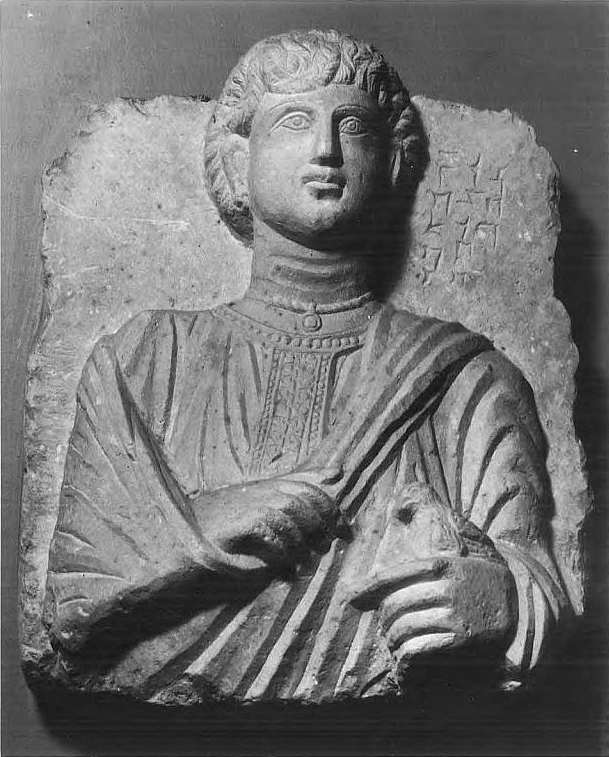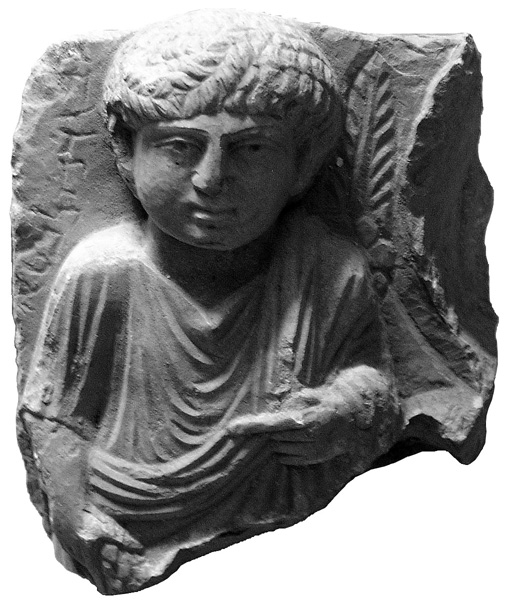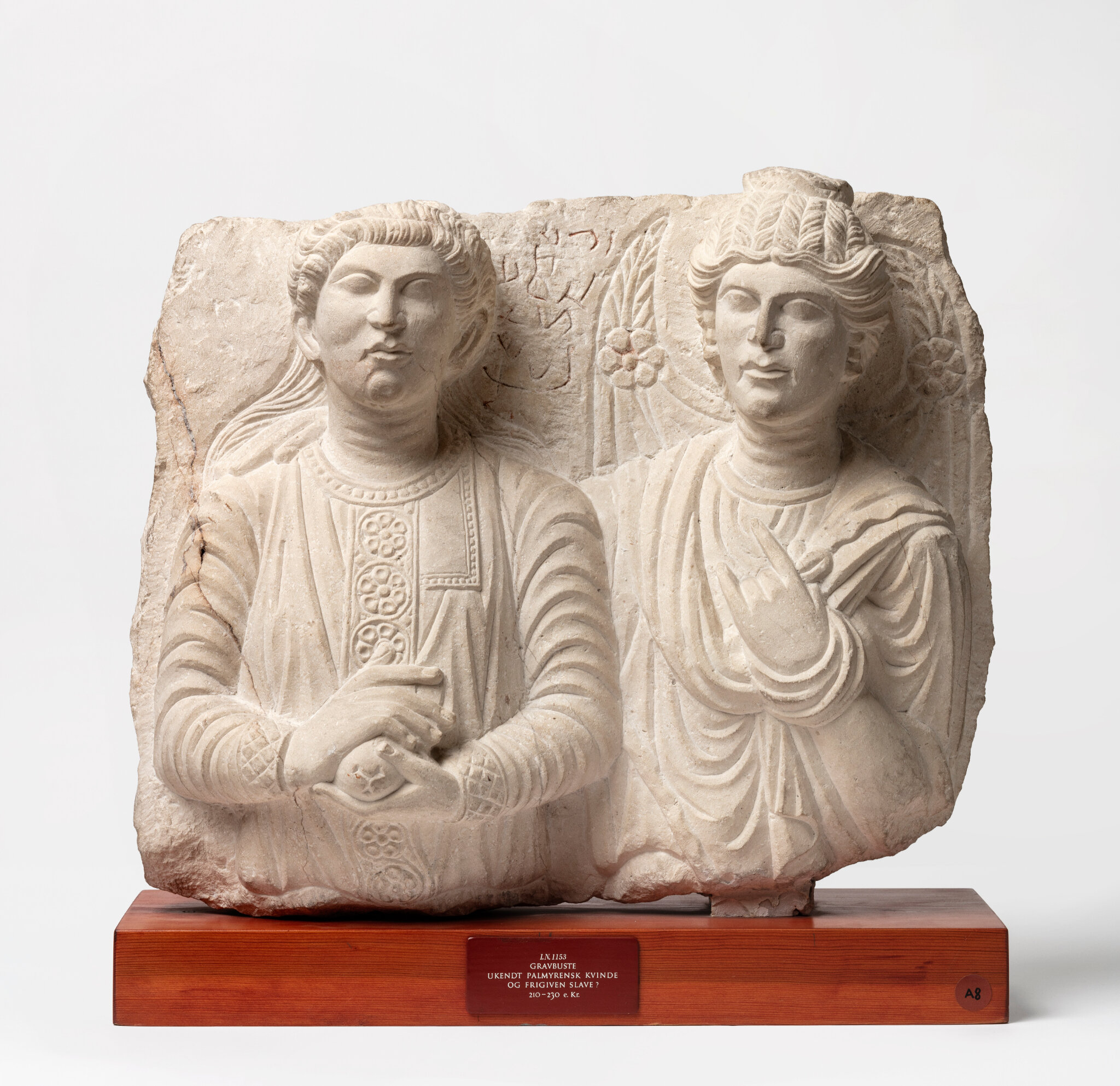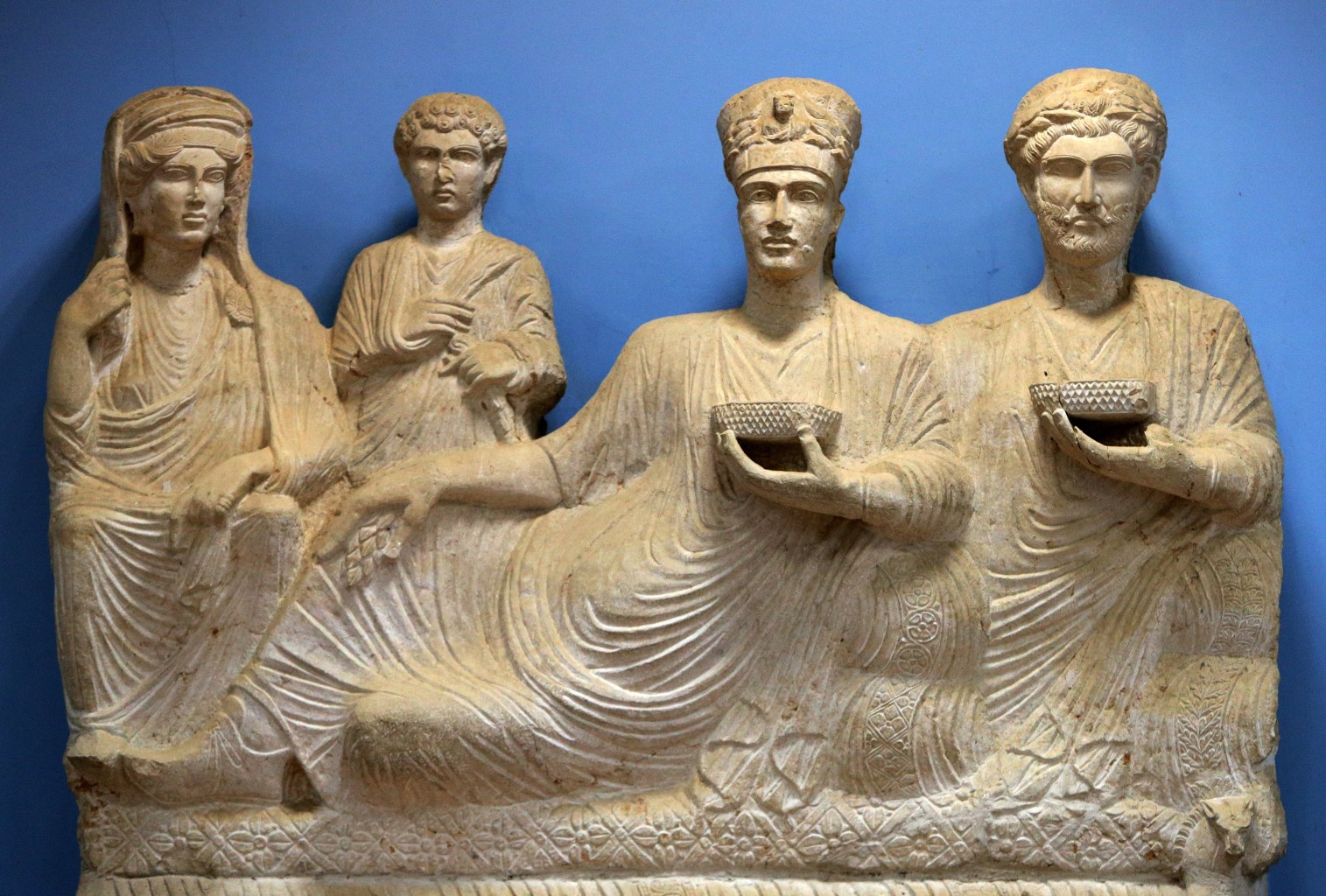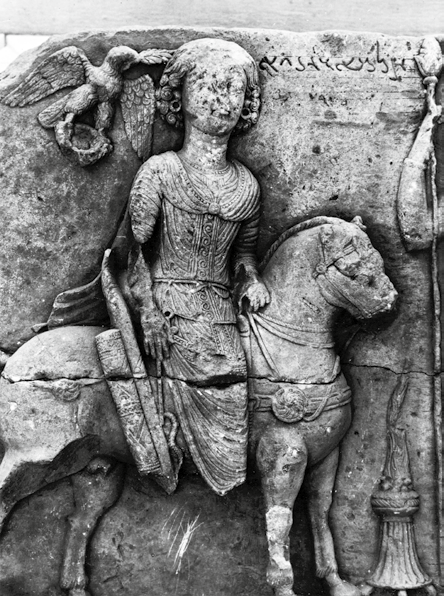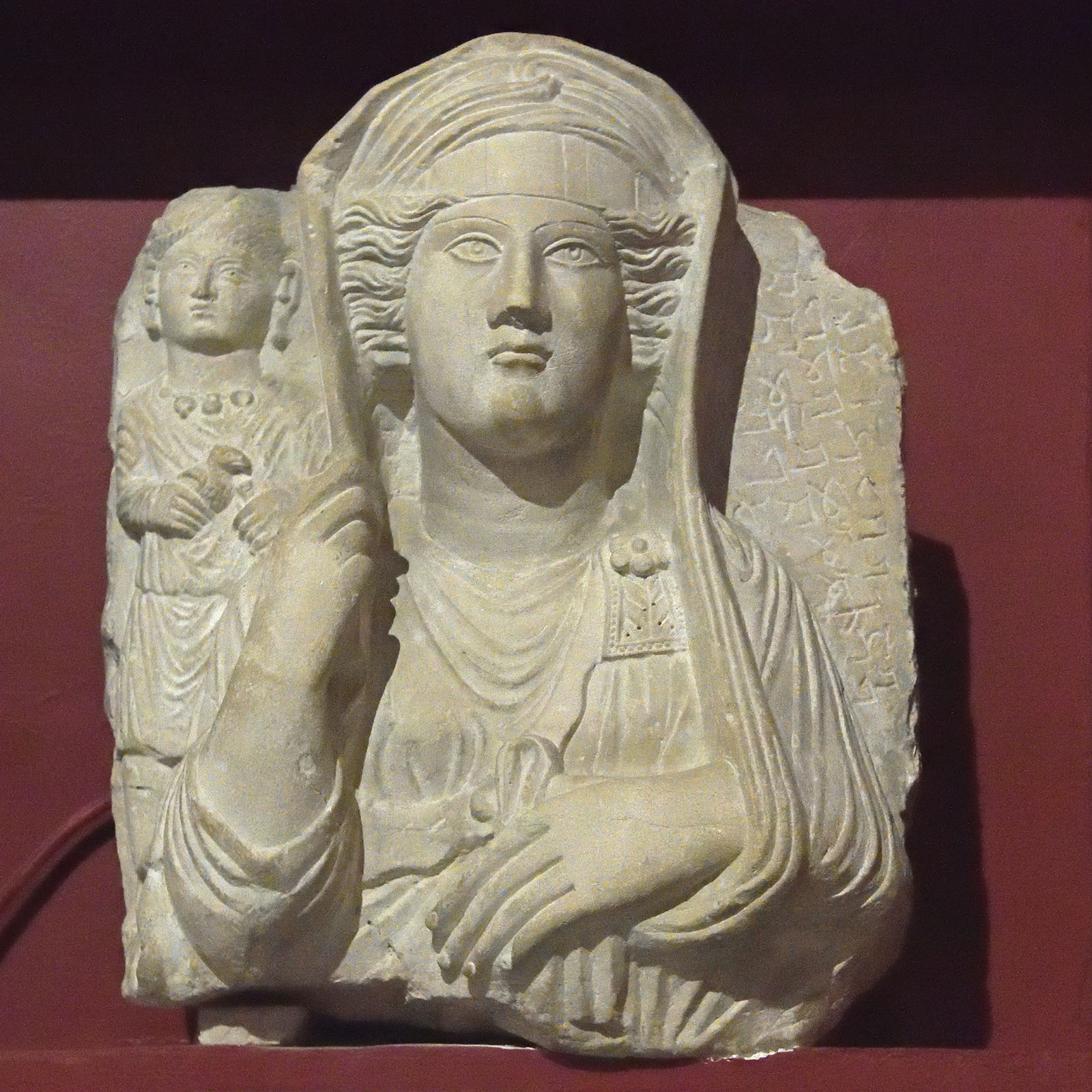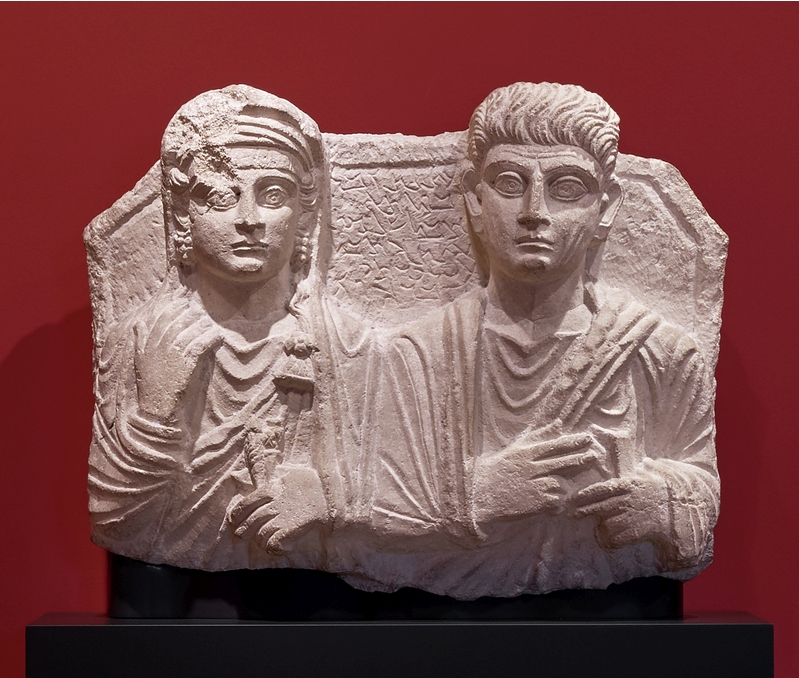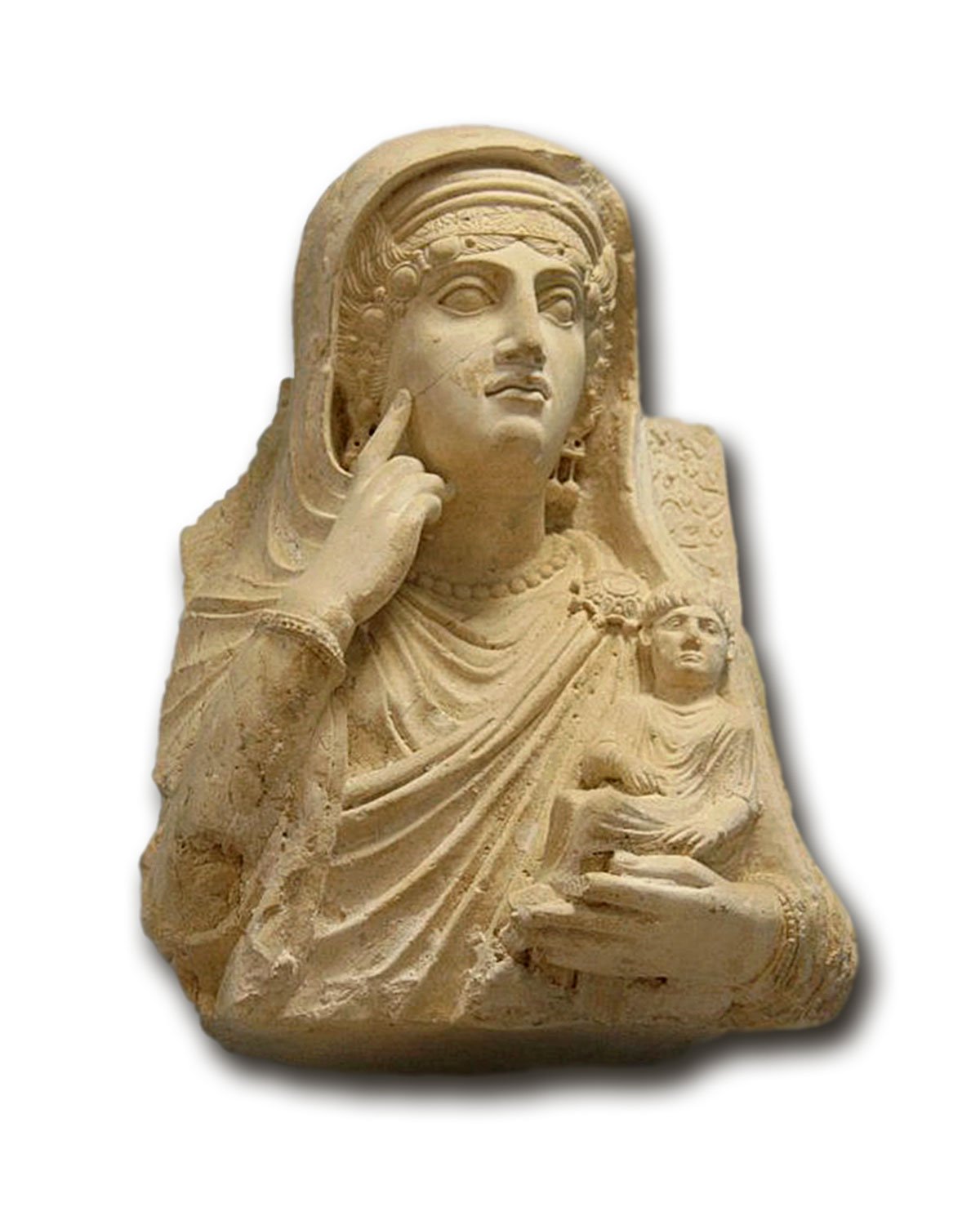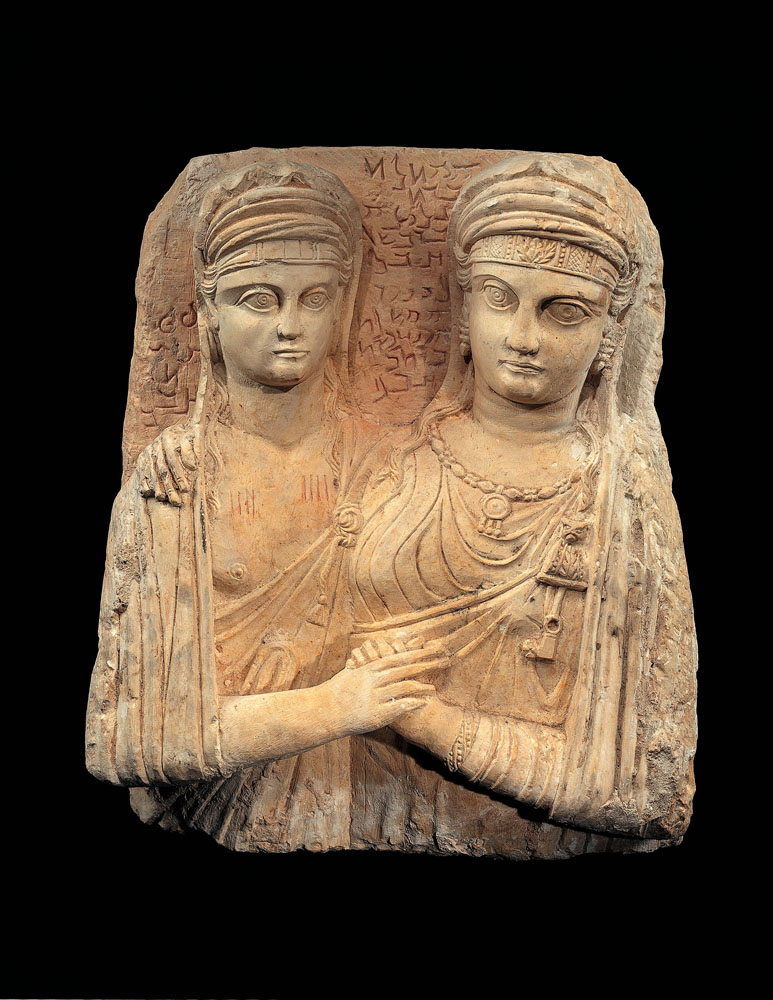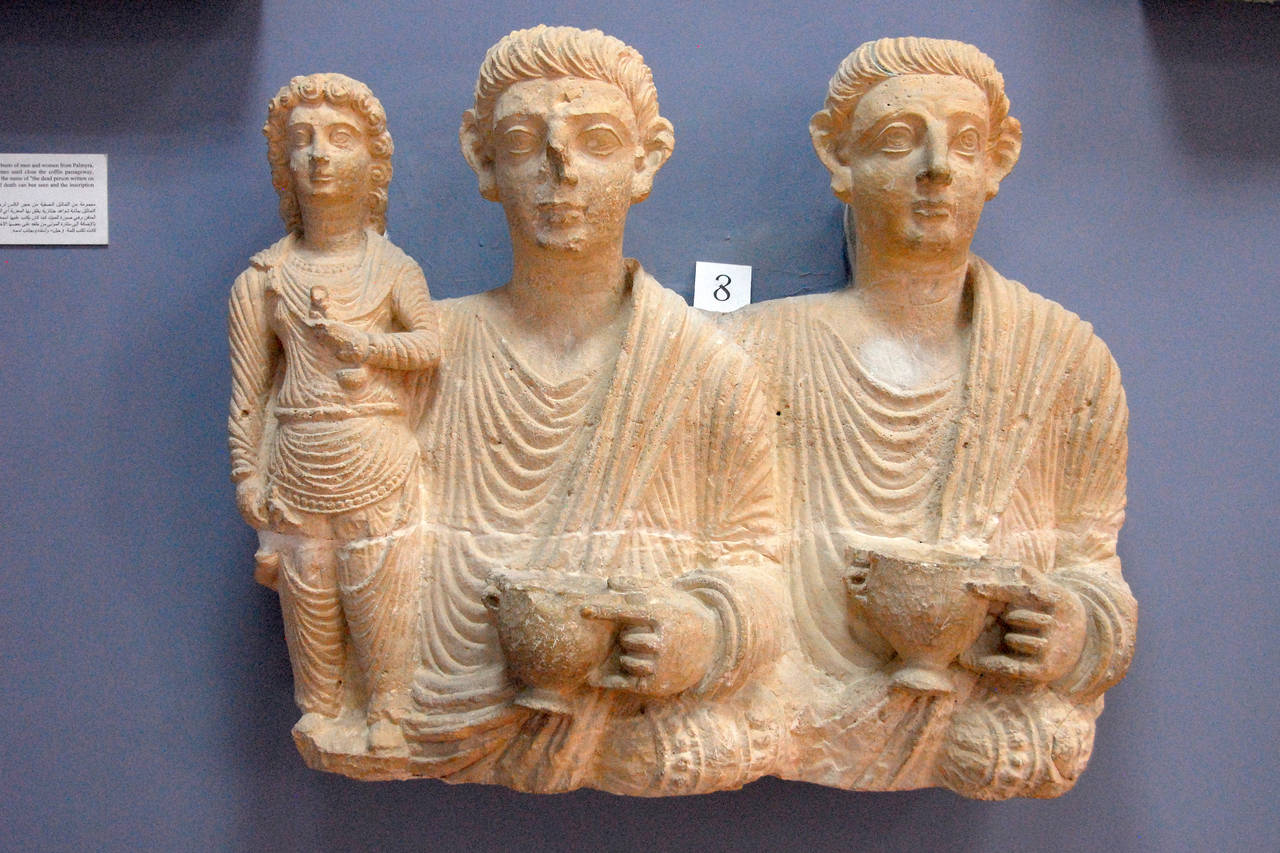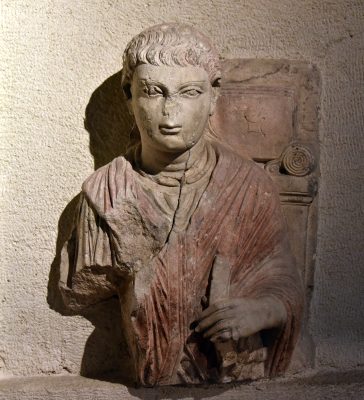
Funerary stela from Palmyra, c. 150
Limestone, 51 cm (high)
The Istanbul Archaeological Museum
Inv. no. 379
“A similar sign appears on other comparable objects in Palmyrene funerary busts which have been interpreted as schedulae or supports for writing comparable to wax tablets, although in formal terms the identification is not particularly convincing. Nonetheless the presence of this same sign on writing tablets above the shoulder of a figure [fig. 9] who seems to be holding the same type of supposed schedulae would appear to confirm that both the object and the starred cross must relate to a professional activity in which writing played a key role. This “scribe” is one of the portraits from Jarhai’s tomb now in the Istanbul museum, of which there is another portrait with damaged hands of a figure with a small hanging tablet behind his left shoulder that also bears the cross symbol.”
A funerary relief from Palmyra in the Bilbao Fine Arts Museum
https://www.museobilbao.com/uploads/salas_lecturas/archivo_in-71.pdf
Funerary relief of an unidentified Palmyrene man. Roman period, 150-200 CE. From Palmyra, Syria. Museum of Archaeology, Istanbul, Turkey.
©Osama SM Amin FRCP(Glasg)
Young man with long hair on the back of the head. A torc and a ring
Mentioned in: “Portraying Literacy of Palmyra. The Evidence of Funerary Sculpture and Their Interpretation” Łukasz Sokołowski
https://www.academia.edu/
4. Unknown young man with poliptych and roll behind as well as a schedula in his left hand. Istanbul, Istanbul Arkeoloji Müzesi, inv. no.3793.”


